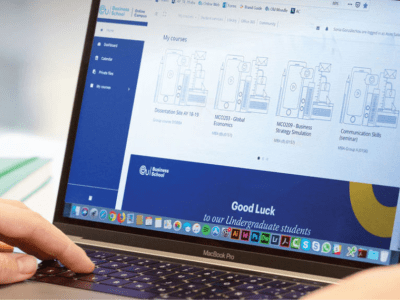Best-selling products, acclaimed advertising campaigns and startups finding success in crowded markets are all successfully tapping into the emotional responses of their customers.
Principles pioneered in the design world are not just for the development of beautiful and useful objects. They can, and have been, used to enhance every interaction we face daily.
Understanding and applying the principles of emotional design as an entrepreneur can elevate your business proposition for potential funders, help you to gain a loyal customer base and support growth. In other words, they are key to startup success.
Here we will explain what emotional design is, why you should use it and how you can apply these principles to building and growing your business.
What is Emotional Design?
Bad design is inherently noticeable. It evokes feelings of frustration, stress or disappointment. One of the most ubiquitous and frustrating problems is that of the poorly designed door. According to Don Norman, author of “The Design of Everyday Things” and emotional design pioneer, visual cues should allow a user to discover and understand how to interact with a design. When you push a door that should be pulled it is not you at fault. Often, great design creates such a seamless experience that you do not even notice it. When it comes to building a successful business, however, you want to create a memorable experience that customers are excited to share with others. And that is where emotional design comes in.
Emotional design intentionally seeks to evoke specific emotions in its users. There are three levels of response that designers appeal to:
Visceral – This is the initial gut-reaction someone has to a design. What does it look like? Does it seem easy to use? This could apply to the look of a new phone or the design of a website.
Behavioral – This is the response caused by interacting with your design. Is it easy to use? Does it give the user a sense of control or mastery? The language you employ will also affect the user’s emotional experience.
Reflective – This is a conscious evaluation of the product or service. If the overall visual impression, usability, emotional durabulity and value for money is positive, the user will form an attachment to it and spread the word, becoming a brand evangelist.
Often, functional design will stop at the second level. However, the best design hits all three levels of response. In today’s crowded marketplace, considering your product, services and overall business design from these three standpoints will give you a competitive edge.
Why Use Emotional Design?
Design that successfully appeals to visceral, behavioral and reflective responses produces feelings of delight in the user. Emotion is linked to memory, so giving your customer a positive, emotional experience will support their loyalty to your business. And if customers reflect on your offering and feel positive, they will become vocal supporters.
Using emotional design principles makes good business sense. And you can integrate this approach into every stage of your business lifecycle.
Determining Your Business Idea
You may already have a clear idea of what your business is going to be. If so, it’s not too late to embed design thinking into the core of your brand.
If you don’t yet know what your offer is, the best place to start is with a question: what problem do you want to solve and why? Effective startups tap into a challenge that has not yet been remedied by any existing competitors. As the founder, your passion and enthusiasm (as well as relevant skills and experience) will carry the business forward, so it is equally important to ensure you are excited by your idea.
Once you have identified the pain-point that you want to fix, ask yourself: how do you want your customers to feel? Robert Plutchik’s ‘Wheel of Emotion’ offers the perfect starting point for thinking about the emotional response you want to elicit. He identified eight basic emotions which can be combined to produce the more complex feelings on our emotional spectrum. These are:
- Anger
- Disgust
- Fear
- Sadness
- Anticipation
- Joy
- Surprise
- Trust

The feelings you want to evoke should inform everything about your business, from the look and functionality of your product, to the way you present it and your company to the world.
Building Your Brand
Your brand is not just the look and feel of your business. It should inform every interaction, initiative and process. And at the heart of your brand will be the emotional response you want to inspire.
When building your brand, there are some core elements you need to consider:
- Name and tagline
- Logo
- Color palette
- Brand promise and values
- Voice
If you’re able to work with a brand and design agency, make sure your brief clearly explains the problem you are trying to solve and the way you want to make your customers feel.
If you need to do some of this work yourself, it is worth carefully considering the colors, shapes and vocabulary you use. All of this will all contribute to the perception of your brand and the visceral, behavioral and reflective emotions triggered in your clients.
In a logo, sharp lines and corners suggest stability, efficiency and practicality. Softer curves imply community, collaboration and love. There is a complex psychology behind the choice of shapes in logos that is worth digging into.
With tone and vocabulary, consider whether you wish to use clear and simple language that feels accessible and welcoming, or specific, perhaps scientific, terminology to evoke trust and establish authority.
Finally, the choice of your principle and supporting color palette should be informed by their emotional associations. For example, blue is dependable and as such is often used for banks, and, when McDonalds rebranded, they introduced green to their brand colors to imply natural, healthy food.
Once you have made your decisions, these should inform a detailed brand strategy which will determine everything from the color of your packaging to the error message on your website.
Establishing Yourself in the Market
Think for a moment about the most successful adverts you’ve seen. It’s not just a product they are selling, but a feeling. Your marketing and communications strategy should be determined by the emotional responses you want to elicit.
For effective marketing it’s important to know your audience. Creating personas is the most effective way to inhabit your target customer profiles and get to know their personal goals, lifestyle, digital habits, career aspirations and more.
Now you know your customers, bring in emotion. Effective campaigns bring your brand story and brand personality to life, demonstrating why you exist and how you will behave. They also appeal to the feelings you identified at the start. Chipotle offers a great example of this. Leaving their product – fresh and healthy food – to the very end of their advert, they tell a story which is designed to elicit an emotional response in the viewer, in turn making it more memorable.
Another helpful design principle you can borrow at this stage is iterative design. Watch how people interact with your product, platform and campaigns, and be prepared to make changes. Data and performance metrics will become your best friends as you determine the most effective approach to establish your brand in the market.
Growing Your Business
Once you are established and have started to experience success, you’ll need to start building your team. Handing over day-to-day operations to new employees so you can focus on business development can be tough. A thorough approach to hiring and training is essential.
The process of building a team is made much simpler when you have a strong brand story. If your values and purpose are communicated clearly, the people applying to work with you should have the goals and attitude you are looking for. Onboarding and training should focus heavily on your mission, explaining the problem you are solving and the emotions you want to evoke in your customers. At this relatively early stage of your company, it’s likely that unanticipated scenarios and customer queries will arise. Empowering employees with a clear understanding of the personality of your brand will enable them to react appropriately, and with a degree of autonomy that will have positive ramifications both for your customers and your team.
Expansion may involve moving to new markets or increasing your product range. Ensure that you stay true to your brand and return whenever necessary to the questions you asked yourself at the beginning; what problems are you solving and why? How do you want your customers to feel? Consider cultural distinctions to inform brand positioning in new markets. Remember that tastes and needs change; ask for feedback from your clients; evaluate and iterate to secure their loyalty as you grow.
Design for Business Success
Design thinking offers entrepreneurs another lens through which to approach the various stages of their business. Brands that are consistent and honest in their offering, accurate in their targeting and conscientious when they grow, are those that find lasting success.
Business Education for Entrepreneurial Success
At EU Business School, entrepreneurship is in our DNA. We’re proud to count many successful entrepreneurs amongst our global network of 27,000 alumni.
We have a wide range of English-taught bachelor’s, master’s and MBA programs to choose from, including a BA in Digital Business, Design & Innovation, and a Master in Innovation and Entrepreneurship.
With a combination of theoretical knowledge and case studies from the cutting edge, our pragmatic approach to teaching will ensure you are ready to hit the ground running.










